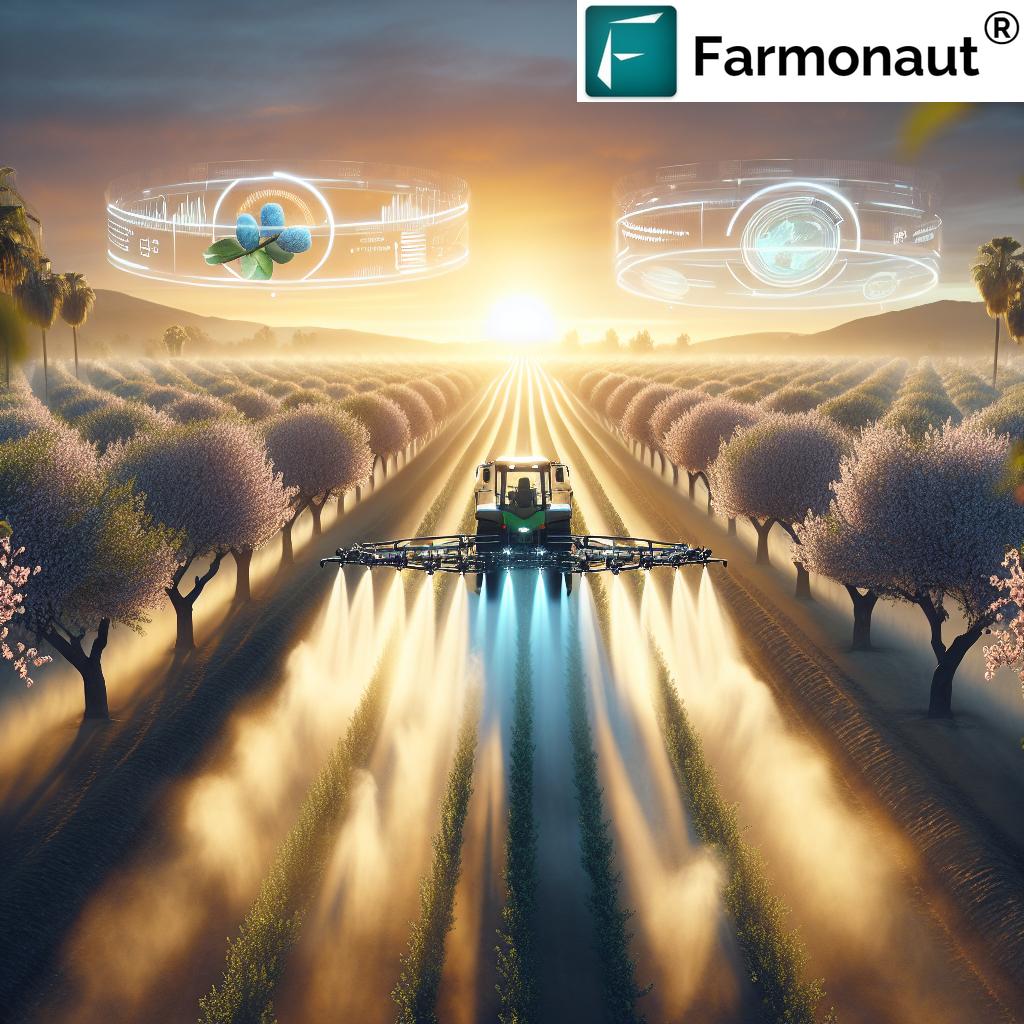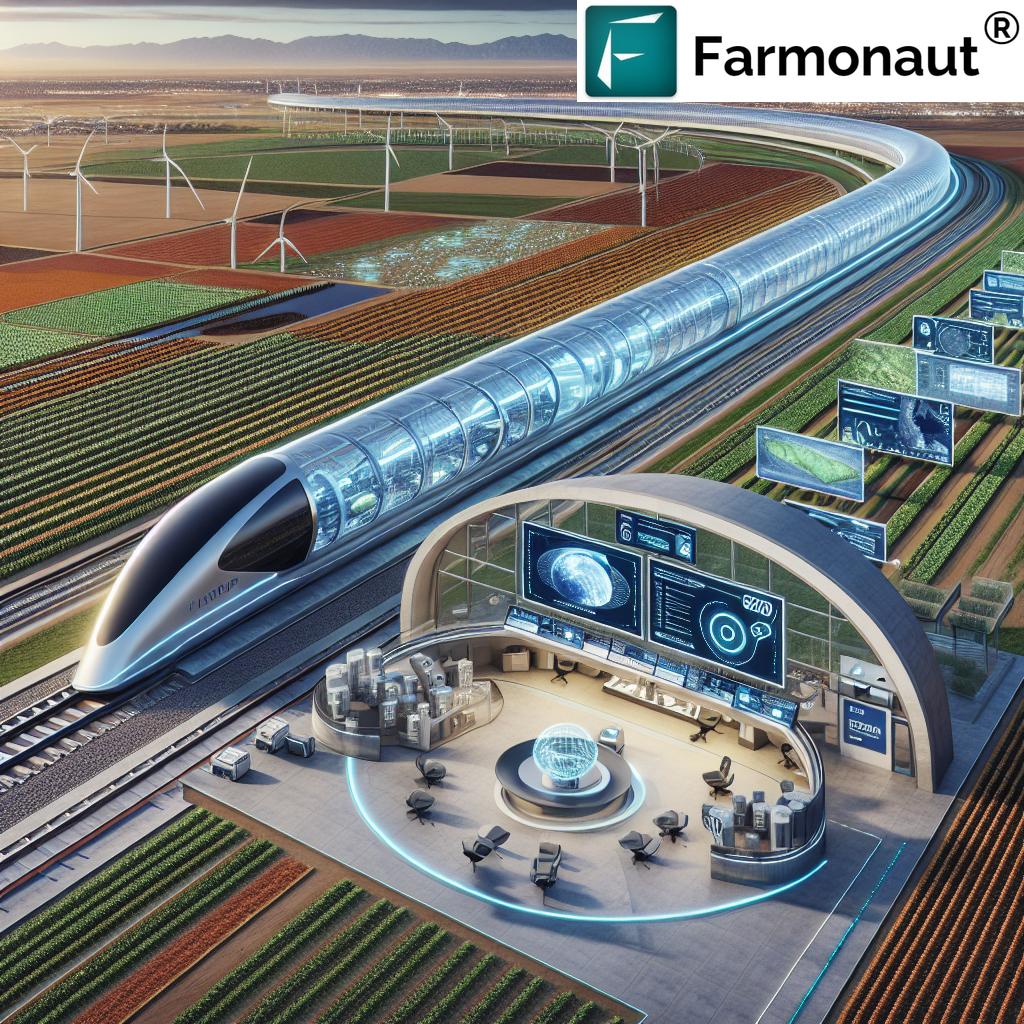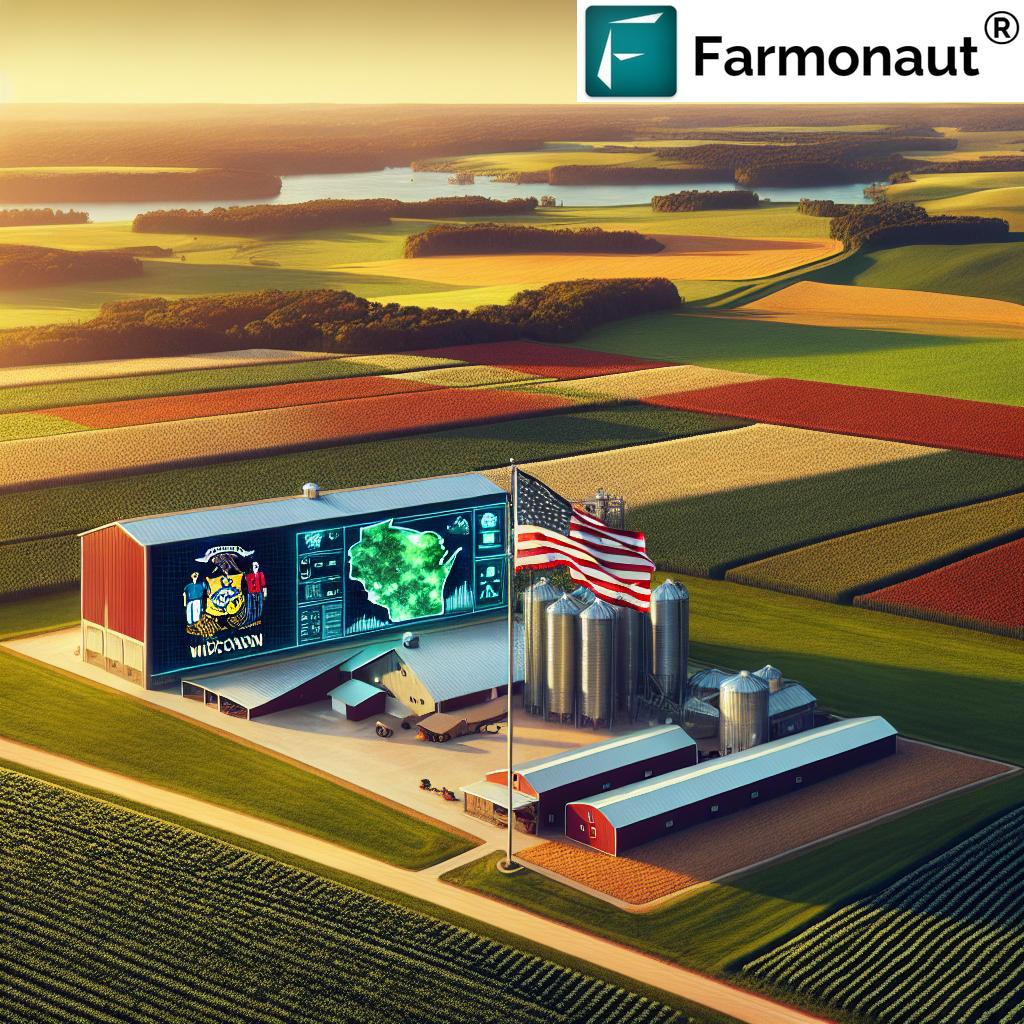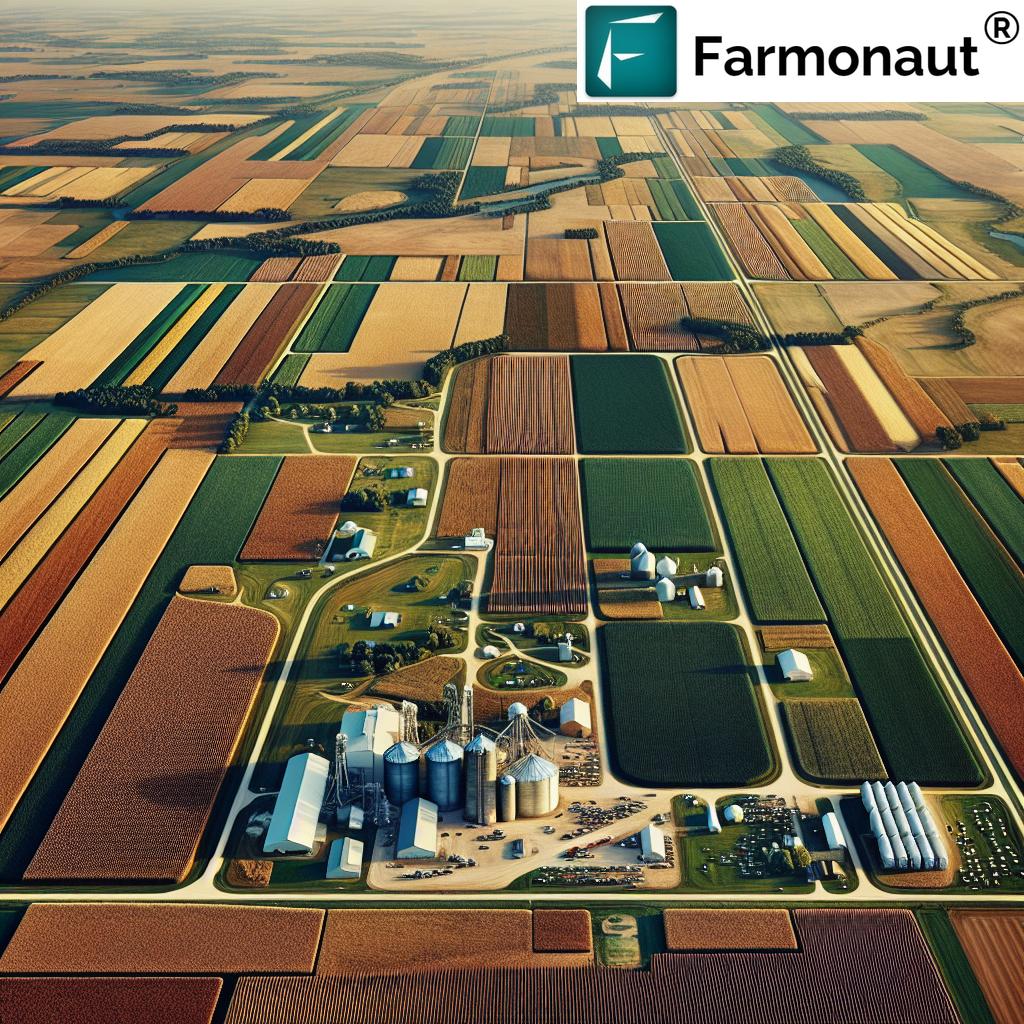Kuna Idaho’s Agricultural Transformation: Rezoning Paves Way for Tech Park Amid Community Debate
“Kuna’s city council rezoned southeast farmland with a narrow 3-2 vote, sparking debate on urban growth vs. agricultural preservation.”
In the heart of Idaho’s Treasure Valley, a significant transformation is underway. Kuna, a city known for its rich agricultural heritage, stands at the crossroads of tradition and progress. The recent decision by the Kuna City Council to rezone southeast farmland for industrial development has ignited a passionate debate among community members, policymakers, and industry leaders. This pivotal moment in Kuna’s history reflects a broader trend sweeping across rural America, where farming communities grapple with the pressures of urbanization and technological advancement.
As we delve into this complex issue, we’ll explore the multifaceted implications of the Gemstone Technology Park project, examining its potential benefits, challenges, and long-term impact on Kuna’s landscape and community. Join us as we navigate through the intricacies of urban development, agricultural preservation, and the delicate balance between economic growth and rural character.
The Rezoning Decision: A Closer Look
On a Tuesday evening that will long be remembered in Kuna’s history, the city council chambers were packed with concerned citizens, eager developers, and curious onlookers. The air was thick with anticipation as the council prepared to vote on a proposal that would fundamentally alter the fabric of their community. With a narrow 3-2 decision, the council approved the rezoning of a significant portion of southeast Kuna from agriculture to industrial use, paving the way for the ambitious Gemstone Technology Park project.
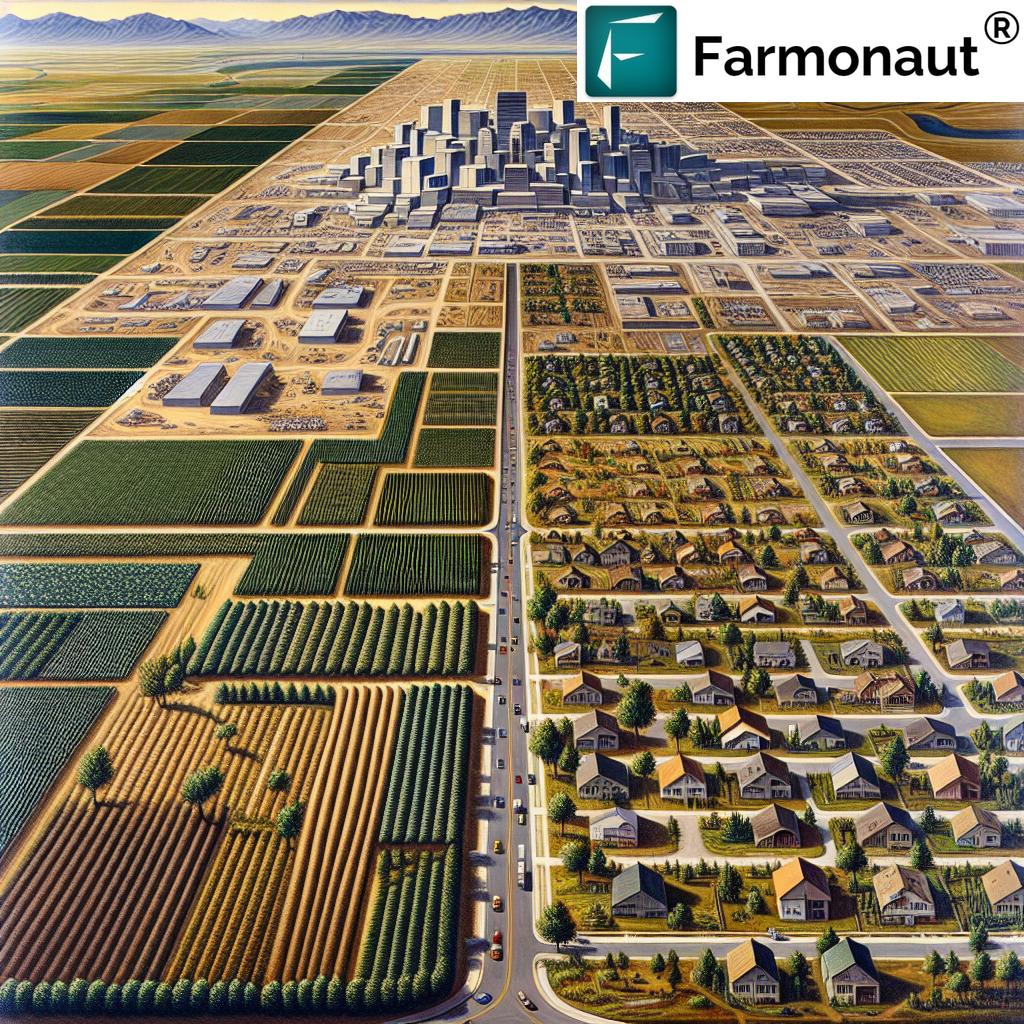
This decision wasn’t made lightly. Hours of public comment, both in support and opposition to the data center, preceded the vote. The tie-breaking vote cast by Kuna Mayor Joe Stear underscored the gravity of the situation and the divided opinions within the community. As the gavel fell, sealing the fate of the farmland in question, it became clear that Kuna was embarking on a new chapter in its development story.
The Promise of Progress: Gemstone Technology Park
At the center of this transformation is the proposed Gemstone Technology Park, a project that promises to bring significant technological investment to Kuna. The cornerstone of this development is a state-of-the-art data center, which proponents argue will position Kuna as a key player in the digital economy of the future.
“The proposed data center in Kuna promises $40 million in community improvements, benefiting schools, police, and fire departments.”
Diode Ventures, the company behind the Gemstone Technology Park project, has pledged substantial community benefits as part of their development plan. The headline figure of $40 million in direct contributions to the community has caught the attention of many Kuna residents. These funds are earmarked for critical improvements to the city’s infrastructure and services, including:
- Enhancements to the Kuna School District
- Upgrades for the Kuna Police Department
- Improvements to the Kuna Fire Department
These promised investments have become a cornerstone of the argument in favor of the rezoning decision. Supporters see the project as a golden opportunity to address long-standing needs within the community, potentially elevating the quality of life for all Kuna residents.
Community Perspectives: A Town Divided
The rezoning decision has sparked a range of reactions among Kuna’s residents, highlighting the complex nature of community development decisions. Let’s hear from some of the voices on both sides of the debate:
In Support: A Vision of Progress
Dana Hennis, a 20-year resident living adjacent to the property in question, offers a pragmatic view in support of the project:
“I think this is a good usage that is allowed by the development agreement that provides the neighbors with a lot less traffic, a lot less other things going on that we don’t necessarily think our roads are capable of, and our school district is capable of.”
Hennis’s perspective highlights a key argument in favor of the data center: that it represents a preferable alternative to high-density housing developments. He elaborates:
“I’m in support of it because, like I said, the alternative is what we fear, you know, high density housing, apartments or townhouses, or much more residential housing that our school district can’t support out there, and we don’t really have the utilities structure out that way.”
In Opposition: Concerns for the Future
On the other side of the debate, residents like Shalee Murray express apprehension about the long-term impacts of such a significant industrial development:
“The main part that is really concerning is the construction will take 10 years. And these roads, our infrastructure in Kuna, isn’t ready to handle that.”
Murray’s concerns stem from personal experience, having witnessed similar transformations in her childhood home in northern Utah:
“It was just a domino effect, one by one, the farms surrounding [us] all turned to either industrial or neighborhoods, and so now my parent’s home is the only farm — surrounded by warehouses and neighborhoods.”
This perspective highlights the fear of irreversible change to Kuna’s rural character and the potential loss of agricultural heritage that has defined the community for generations.
Balancing Act: Economic Growth vs. Agricultural Preservation
The debate surrounding the Gemstone Technology Park project exemplifies a broader challenge faced by many rural communities across the United States. As cities expand and technology sectors seek new homes, formerly agricultural lands often become prime targets for development. This trend raises critical questions about the future of farming and food production, as well as the cultural identity of rural America.
In Kuna’s case, the rezoning decision represents a significant shift from agricultural to industrial land use. While this change promises economic benefits and job creation, it also means the loss of farmland that has been productive for generations. This transformation raises important questions about food security, environmental sustainability, and the preservation of rural landscapes.
As communities like Kuna navigate these complex issues, innovative solutions are emerging to bridge the gap between agricultural preservation and technological advancement. One such solution is the integration of precision agriculture technologies, which allow farmers to optimize their operations and increase yields on existing farmland. Companies like Farmonaut are at the forefront of this movement, offering satellite-based farm management solutions that empower farmers to make data-driven decisions.
The Role of Technology in Modern Agriculture
While the Gemstone Technology Park project represents a shift away from traditional farming in Kuna, it’s important to recognize that technology and agriculture are not mutually exclusive. In fact, modern farming increasingly relies on advanced technologies to improve efficiency, sustainability, and productivity. This intersection of agriculture and technology offers a potential middle ground in the debate over land use and economic development.
Precision agriculture technologies, such as those offered by Farmonaut, demonstrate how technological advancements can support and enhance farming practices rather than replace them. These tools allow farmers to:
- Monitor crop health in real-time using satellite imagery
- Optimize irrigation and fertilizer use
- Predict and mitigate pest and disease outbreaks
- Improve overall farm management and decision-making
By leveraging these technologies, farmers can increase yields, reduce resource waste, and improve their economic viability – all while preserving agricultural land use. This approach offers a vision of rural development that embraces technological progress without sacrificing agricultural heritage.
Infrastructure Challenges and Opportunities
One of the most pressing concerns raised by opponents of the Gemstone Technology Park project is the strain it may place on Kuna’s existing infrastructure. The city’s roads, in particular, have been a focal point of the debate, with many residents questioning whether the current network can handle the increased traffic and heavy machinery associated with a decade-long construction project.
However, proponents of the development argue that the project could catalyze much-needed infrastructure improvements. The $40 million in community contributions promised by Diode Ventures could potentially be leveraged to address some of these concerns, funding road upgrades and other critical infrastructure projects.
This situation highlights the complex interplay between development, infrastructure, and community needs. As Kuna grapples with these challenges, it may find inspiration in innovative solutions being implemented in other rapidly growing areas. For instance, smart city technologies and sustainable urban planning practices could help mitigate some of the negative impacts of rapid development while enhancing the overall quality of life for residents.
The Environmental Perspective
As we consider the transformation of Kuna’s landscape, it’s crucial to address the environmental implications of this shift from agricultural to industrial use. The loss of farmland raises concerns about biodiversity, soil health, and local ecosystems. However, the conversation around environmental impact is nuanced and multifaceted.
Modern data centers, like the one proposed for the Gemstone Technology Park, often incorporate advanced sustainability features. These can include:
- Energy-efficient cooling systems
- Renewable energy sourcing
- Water conservation measures
- Green building practices
While these features don’t negate the loss of agricultural land, they do represent a commitment to environmental stewardship in industrial development. Furthermore, the shift towards digital infrastructure can, in some cases, reduce overall environmental impact by centralizing energy-intensive computing processes.
For those concerned about the environmental aspects of land use change, tools like Farmonaut’s carbon footprinting service can provide valuable insights. This technology allows businesses and farmers to monitor and reduce their environmental impact, offering a path towards more sustainable practices regardless of land use type.
Economic Implications: Beyond the Data Center
The economic impact of the Gemstone Technology Park project extends far beyond the immediate $40 million in community contributions. The introduction of a major technology center in Kuna has the potential to reshape the local economy in several ways:
- Job Creation: Beyond construction jobs, the data center will require a range of skilled workers for its operation and maintenance.
- Economic Diversification: By adding a technology sector to its economic base, Kuna becomes less reliant on agriculture and more resilient to economic fluctuations.
- Attracting Ancillary Businesses: The presence of a major tech facility could draw other businesses to the area, from suppliers to service providers.
- Increased Tax Base: Industrial developments typically contribute significantly to local tax revenues, potentially funding further community improvements.
However, it’s important to consider the potential economic losses as well. The reduction in agricultural land could impact farm-related businesses and the local food economy. Additionally, there are concerns about how the changing character of Kuna might affect its appeal as a rural community, potentially impacting tourism and quality of life for current residents.

The Future of Farming in Kuna
As Kuna embarks on this new chapter of industrial development, it’s crucial to consider the future of farming in the region. While the rezoning decision represents a loss of agricultural land, it doesn’t necessarily spell the end of farming in Kuna. Instead, it may catalyze a shift towards more intensive, technology-driven agricultural practices on the remaining farmland.
This is where precision agriculture technologies can play a crucial role. Tools like Farmonaut’s crop plantation and forest advisory services can help farmers maximize productivity on smaller land areas. By leveraging satellite data and AI-driven insights, farmers can optimize their operations, potentially offsetting some of the impacts of reduced agricultural acreage.
Furthermore, the influx of technology-related businesses to the area could create new opportunities for agricultural innovation. We might see the emergence of vertical farming operations, hydroponic systems, or other high-tech farming methods that can produce high yields in smaller spaces.
Community Engagement and Future Planning
The heated debate surrounding the Gemstone Technology Park project highlights the importance of community engagement in urban planning decisions. As Kuna moves forward with this development, it will be crucial for city leaders to maintain open lines of communication with residents, addressing concerns and incorporating community feedback into the implementation process.
Some key areas for ongoing community engagement include:
- Traffic management plans
- Environmental impact mitigation strategies
- Preservation of remaining agricultural lands
- Integration of the new development with existing community character
By fostering a collaborative approach to development, Kuna can work towards a future that balances economic growth with the preservation of its rural heritage and community values.
Kuna’s Agricultural Rezoning: Pros and Cons
| Aspect | Potential Benefits | Potential Concerns |
|---|---|---|
| Economic Impact | $40 million in community improvements, job creation, economic diversification | Loss of agricultural revenue, potential impact on farm-related businesses |
| Infrastructure | Improved roads and utilities, potential for smart city technologies | Increased traffic, construction disruption, strain on existing infrastructure |
| Community Character | Modernization, potential to attract new residents and businesses | Loss of rural atmosphere, change in community identity |
| Land Use | More efficient use of land, potential for high-tech agricultural practices | Loss of farmland, reduction in local food production capacity |
| Environmental Impact | Potential for sustainable industrial practices, centralized energy use | Loss of green space, potential impacts on local ecosystems |
| Education and Services | Improved funding for schools, police, and fire departments | Potential strain on services due to population growth |
Lessons for Other Communities
Kuna’s experience with the Gemstone Technology Park project offers valuable insights for other rural communities facing similar development pressures. Some key takeaways include:
- Proactive Planning: Communities should develop comprehensive land use plans that anticipate and guide future development while preserving essential agricultural lands.
- Balancing Interests: Successful development requires finding a balance between economic growth, environmental preservation, and community character.
- Embracing Technology: Integrating agricultural technology can help preserve farming practices even as communities evolve.
- Community Engagement: Open dialogue and active citizen participation are crucial for making development decisions that reflect community values.
- Infrastructure Preparation: Communities should assess and plan for infrastructure needs well in advance of major development projects.
By learning from Kuna’s experience, other rural communities can better navigate the complex landscape of development and preservation.
The Role of Agricultural Technology in Changing Landscapes
As communities like Kuna grapple with changes in land use and economic focus, agricultural technology offers a bridge between tradition and innovation. Companies like Farmonaut are at the forefront of this technological revolution in farming, providing tools that can help preserve agricultural practices even in the face of urbanization and industrialization.
Farmonaut’s suite of services, including satellite-based crop monitoring, AI-driven advisory systems, and blockchain-based traceability solutions, empower farmers to optimize their operations and adapt to changing circumstances. These technologies can help farmers:
- Increase yields on smaller land areas
- Reduce resource usage and environmental impact
- Improve crop quality and market value
- Enhance farm management and decision-making
By leveraging these advanced tools, farmers in Kuna and similar communities can maintain viable agricultural operations even as the landscape around them changes. This technological adaptation represents a potential path forward that honors agricultural heritage while embracing the benefits of modern innovation.
Conclusion: A Community in Transition
The rezoning decision in Kuna, Idaho, marks a significant moment in the city’s history, symbolizing the broader challenges faced by rural communities in an increasingly urbanized and technologically driven world. As Kuna embarks on this new chapter, it serves as a microcosm of the complex interplay between agricultural preservation, economic development, and community identity.
The Gemstone Technology Park project promises substantial economic benefits and community improvements, but it also raises valid concerns about the loss of farmland, environmental impact, and changes to Kuna’s rural character. As the project moves forward, ongoing dialogue, careful planning, and innovative solutions will be crucial to ensuring a balanced and sustainable future for Kuna.
Ultimately, Kuna’s experience offers valuable lessons for other communities facing similar challenges. It underscores the importance of proactive planning, community engagement, and the integration of technology in navigating the delicate balance between progress and preservation. As we look to the future, it’s clear that the most successful communities will be those that can adapt to change while holding onto the core values and characteristics that make them unique.
The story of Kuna’s transformation is far from over. As the Gemstone Technology Park takes shape and the community adapts to its new reality, we’ll continue to watch with interest, learning from both the successes and challenges encountered along the way. In this evolving landscape, tools and technologies like those offered by Farmonaut will play an increasingly important role, helping to bridge the gap between agricultural tradition and technological innovation.
FAQ Section
- Q: What is the Gemstone Technology Park project?
A: The Gemstone Technology Park is a proposed industrial development in Kuna, Idaho, centered around a data center. It promises $40 million in community improvements and significant economic benefits. - Q: How will this project impact Kuna’s agricultural land?
A: The project involves rezoning southeast farmland from agricultural to industrial use, resulting in a loss of farmland but potentially bringing economic diversification to the area. - Q: What are the main concerns about this development?
A: Key concerns include increased traffic, strain on infrastructure, loss of agricultural heritage, and potential changes to Kuna’s rural character. - Q: How is the community responding to this change?
A: The community is divided, with some supporting the economic opportunities and others worried about the long-term impacts on Kuna’s landscape and way of life. - Q: What role can agricultural technology play in this transition?
A: Agricultural technology, such as precision farming tools offered by companies like Farmonaut, can help farmers optimize operations on remaining farmland, potentially mitigating some impacts of reduced agricultural acreage.
For more information on how technology is transforming agriculture and land use, visit Farmonaut’s website or explore their innovative solutions through their mobile apps:
Earn With Farmonaut: Affiliate Program
Earn 20% recurring commission with Farmonaut’s affiliate program by sharing your promo code and helping farmers save 10%. Onboard 10 Elite farmers monthly to earn a minimum of $148,000 annually—start now and grow your income!









